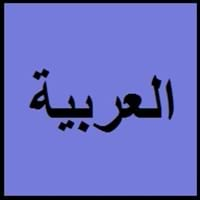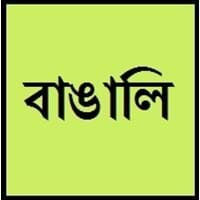Countries
Algeria, Bahrain, Chad, Comoros, Djibouti, Egypt, Eritrea, Iraq, Israel, Jordan, Kuwait, Lebanon, Libya, Mauritania, Morocco, Oman, Qatar, Saudi Arabia, Somalia, Sudan, Tunisia, United Arab Emirates, Yemen
Andaman and Nicobar Islands, Bangladesh, India, Sierra Leone
National Language
Algeria, Bahrain, Comoros, Djibouti, Egypt, Jordan, Kuwait, Lebanon, Libya, Mauritania, Morocco, Oman, Palestine, Qatar, Saudi Arabia, Somalia, Sudan, Syria, United Arab Emirates, Yemen
Bangladesh, India
Second Language
Not spoken in any of the countries
India
Speaking Continents
Africa, Asia
Asia
Minority Language
Not spoken in any of the countries
Australia, Canada, Italy, Japan, Kuwait, Malaysia, Maldives, Nepal, Oman, Pakistan, Qatar, Saudi Arabia, Singapore, South Africa, South Korea, United Arab Emirates, United Kingdom, United States of America
Regulated By
Academy of the Arabic Language, Arabic Language International Council
Bangla Academy, Paschimbanga Bangla Akademi
Interesting Facts
- Arabic is 5th common language in world.
- Classical Arabic is the language of Quran and also it is official language. Classical Arabic is the only way to learn Arabic language in academic way and it does not change.
- Bengali language is the World's sweetest language.
- 21st February is celebrated as an International Mother Language day, which is based on Bengali language.
Similar To
Amharic and Hebrew
Assamese and Oriya
Derived From
Not Available
Sanskrit Language
Alphabets in
Arabic.jpg#200
Bengali-Alphabets.jpg#200
Scripts
Arabic
Bengali, Brahmic family and derivatives
Writing Direction
Right-To-Left, Horizontal
Left-To-Right, Horizontal
Hello
مرحبا
হ্যালো (Hyālō)
Thank You
شكرا
ধন্যবাদ (dhonnobad)
How Are You?
كيف حالك؟
কেমন আছিস? (kêmon achhish?)
Good Night
تصبح على خير
শুভরাত্রি (shubhoratri)
Good Evening
مساء الخير
শুভ সন্ধ্যা। (shubho shondha)
Good Afternoon
مساء الخير
ভাল বৈকাল (Bhāla Baikāla)
Good Morning
صباح الخير
সুপ্রভাত (shuprobhat)
Please
من فضلك
অনুগ্রহ করে (Anugraha karē)
Sorry
آسف
দুঃখিত (dukkhito)
Bye
وداعا
বিদায় (Bidāẏa)
I Love You
أحبك
আমি আপনাকে ভালোবাসি (ami apnake bhalobashi)
Excuse Me
اعذرني
মাফ করবেন (Māpha karabēna)
Dialect 1
Maghrebi
Chakma
Where They Speak
Algeria, Libya, Maghreb, Morocco, Tunisia
Bangladesh, Burma, India
How Many People Speak
Not Available
Dialect 2
Sudanese
Hajong
Where They Speak
Sudan
Bangladesh, India
Dialect 3
Levantine
Rarhi
Where They Speak
Cyprus, Levant
India
How Many People Speak
Not Available
Native Name
(al arabiya) العربية
বাংলা (baɛṅlā)
Alternative Names
Al-’Arabiyya, Al-Fusha, Literary Arabic
Bangala, Bangla, Bangla-Bhasa
French Name
arabe
bengali
German Name
Arabisch
Bengali
Pronunciation
/al ʕarabijja/, /ʕarabi/
Not available
Ethnicity
Arabs
Bengalis (Bengali people)
Origin
512 CE
1000–1200 CE
Language Family
Afro-Asiatic Family, Semitic Family
Indo-European Family
Subgroup
Semitic
Indo-Iranian
Branch
North Arabic
Indic
Early Forms
No early forms
Abahatta, Old Bengali
Standard Forms
Modern Standard Arabic
Bengali
Signed Forms
Signed Arabic
Not Available
Scope
Macrolanguage
Individual
ISO 639 6
Not Available
Not Available
Glottocode
arab1395
beng1280
Linguasphere
12-AAC
59-AAF-u
Language Type
Living
Living
Language Linguistic Typology
Subject-Verb-Object
Not Available
Language Morphological Typology
Fusional, Synthetic
Not Available
Arabic and Bengali Speaking population
Arabic and Bengali speaking population is one of the factors based on which Arabic and Bengali languages can be compared. The total count of Arabic and Bengali Speaking population in percentage is also given. The percentage of people speaking Arabic language is 4.43 % whereas the percentage of people speaking Bengali language is 3.11 %. When we compare the speaking population of any two languages we get to know which of two languages is more popular. Find more details about how many people speak Arabic and Bengali on Arabic vs Bengali where you will get native speakers, speaking population in percentage and native names.
Arabic and Bengali Language Codes
Arabic and Bengali language codes are used in those applications where using language names are tedious. Arabic and Bengali Language Codes include all the international language codes, glottocodes and linguasphere.





